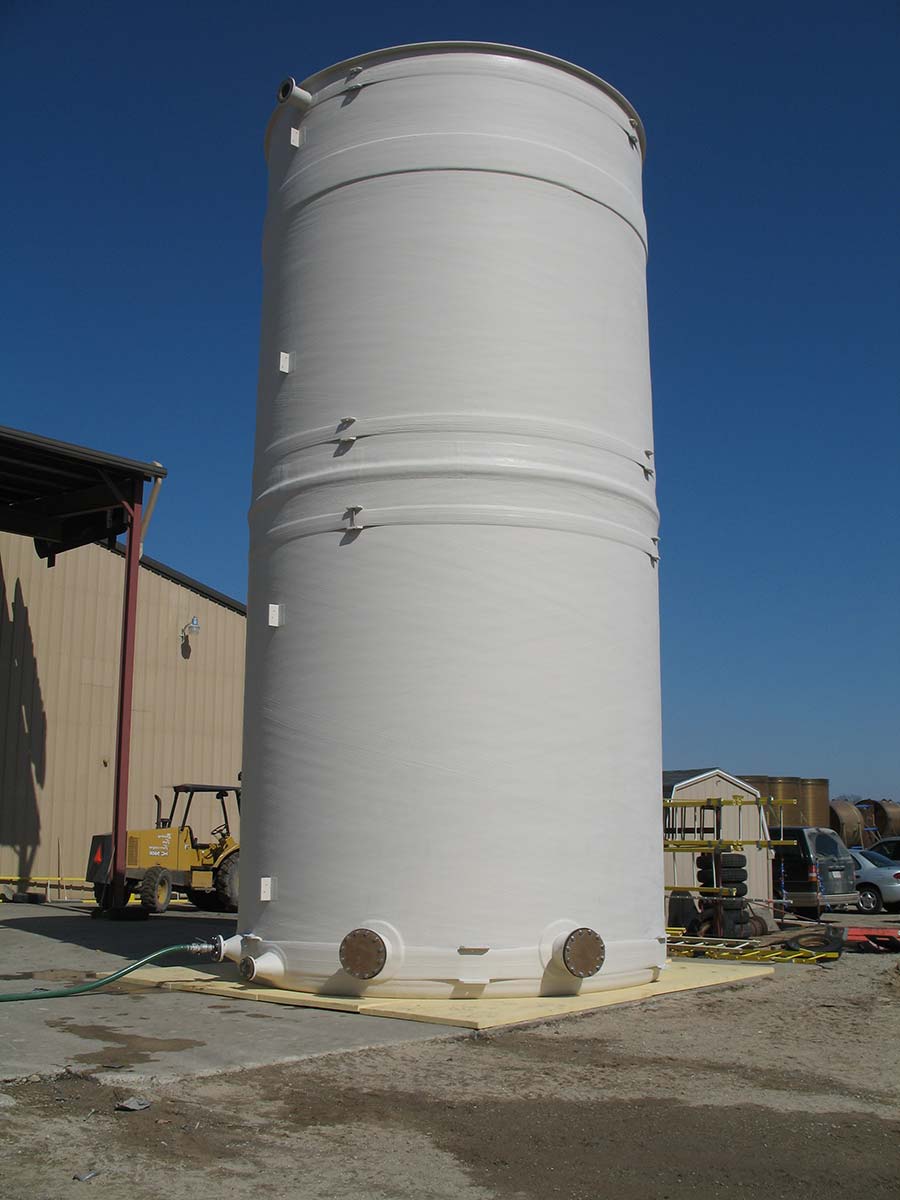Having lots of options can be a great thing in life. Customizability allows people to find exactly what kind of product might work best for them. However, a large array of choice can also be overwhelming. Here at Belding Tank, we hope we can demystify the process of finding the right flat bottom tank to suit your needs.
There are four main types of flat bottom tanks to choose from. Firstly, there is the single containment tank. Single containment tanks are generally used for storing liquid. Secondary containment, a precautionary measure that helps reduce the likelihood of dangerous chemical spills, will take the form of an earthen exterior boundary called a “bund wall”. A double containment tank will share many attributes with a single containment tank. However, instead of using an earthen “bund wall”, a double containment flat-bottom storage tank will use an outer tank layer as secondary containment. The outer tank layer will often be comprised of concrete, and can really elevate the price of the tank in question. However, the secondary containment method of a double containment tank will take up less space than the earthen “bund wall” secondary containment method of a single containment tank. Your choice between these two options will largely come down to what you are looking to store, your budget, and the amount of space you have allotted for the tank.
If a single containment or double containment tank doesn’t seem suited to your project, there are still two other main options. One of which, is called a full containment tank. A full containment tank is built very similarly to a double containment tank. The main difference is that the space between tank layers will be sealed in a full containment tank. The outer tank layer will traditionally also be made of concrete and should safeguard against chemical leaks in liquid and vapor form. Lastly, there is the option of in-ground storage tanks. These tanks are, as their name suggests, built in-ground. This can really help save on space, which could be of great assistance depending on your project. However, it is worth noting that in-ground tanks tend to come with a higher price tag, and on average, an additional one to two years of construction time.
Whatever type of flat bottom tank you decide will work best for your project, make sure you get one of good quality. At Belding Tank, we make sure that every little detail is well thought out and effective. Most of our flat-bottomed tanks are constructed without a seam to ensure greater structural strength. We also offer tank corners with a knuckle radius, so that the tank corners have maximum resistance against hydrostatic pressures and are easier to clean. Whichever type of flat bottom tank you choose, easier-to-clean corners are a great feature because they reduce the likelihood of product contamination. It’s these little details that we think make us such effective flat bottom tank manufacturers. After all, at Belding Tank, quality is our standard, and customer service is our specialty. If you have any additional questions about flat bottom tanks, just know that we will work closely with you every step of the way to ensure you get exactly the product that you need.






